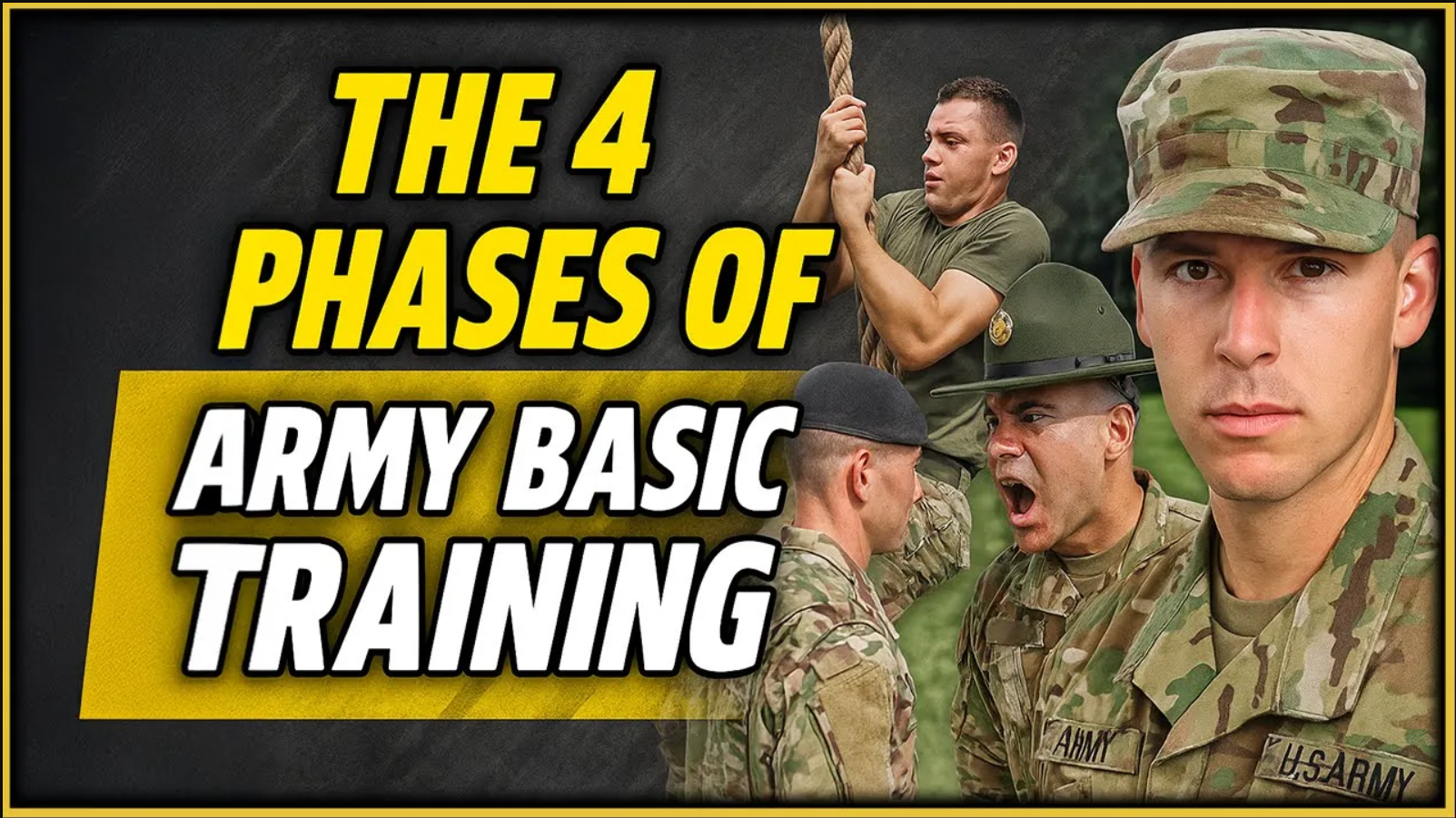If you’re getting ready for Army Basic Training, you’ve probably heard it’s 10 weeks long. But what you may not know is that it’s actually 11 weeks—because it starts with a little-known extra step: Reception Week. After that, you’ll progress through four official phases of training: Yellow, Red, White, and Blue.
In this post, we’ll break down what happens during each of the Army Basic Training Phases, so you can go in fully prepared—not just for the push-ups, but for the full experience.
Week 0: Reception Week (Before Yellow Phase)
Before the “real” training begins, you’ll spend several days at reception—and yes, it’s just as miserable as everyone says.
What to Expect:
- Getting immunizations and medical screenings
- Receiving your gear
- Paperwork and processing
No drill sergeant yelling yet—but a lot of standing in line and doing administrative work. Most soldiers agree: Reception is the worst part.
Phase 1: Yellow Phase (Weeks 1–2)
Yellow Phase kicks off your official Basic Training. It’s all about adjusting to military life, discipline, and the basics.
Key Focus Areas:
- Army values: Loyalty, Duty, Respect, Selfless Service, Honor, Integrity, Courage
- Standing at attention and parade rest
- Marching, saluting, and basic drill movements
- Intro to PT (Physical Training) and formation standards
- Confidence and obstacle courses
- Intro to land navigation
- Memorizing the Soldiers Creed and Army Song
✅ This phase builds your mental foundation—what it means to be a soldier.
Phase 2: Red Phase (Weeks 3–4)
Red Phase dives into hands-on soldiering skills, especially weapon handling and self-defense.
Key Training Areas:
- Basic Rifle Marksmanship (BRM)
- Breathing techniques
- Trigger control
- Dime/washer drills
- Familiarization with assigned weapon
- EST (Engagement Skills Trainer) simulations
- Basic combatives (hand-to-hand self-defense)
- Intro to first aid and tourniquet use
- First field exercise: The Hammer
🔴 This phase is physically demanding, introducing real-world combat preparation.
Phase 3: White Phase (Weeks 5–7)
Often called the “Marksmanship Phase,” White Phase focuses on refining what you learned in Red Phase and pushing it further.
Key Focus:
- Weapons qualification (shooting to standard)
- Prioritizing multiple targets under stress
- Advanced combatives (weapon-based close combat)
- Teamwork and tactical movement
- Second field exercise: The Anvil (2-day, 2-night)
🎯 You’ll be shooting live rounds, qualifying with your weapon, and applying your skills in the field.
Phase 4: Blue Phase (Weeks 8–10)
This is the final test—putting everything together and proving you’re ready to graduate.
Final Training Objectives:
- Advanced weapons familiarization (e.g. M320, AT4, .50 cal)
- Live grenade throws (2 required)
- Fitness test
- Capstone field exercise: The Forge
- Multi-day operation with long ruck marches
- Tactical exercises and teamwork
- Final rite of passage back to the barracks
- Graduation (with practice)
🔵 Blue Phase transforms you from trainee to soldier. You’ll finish with a bonfire, a ruck march, and a graduation.
Bonus: Fitness Testing
Throughout the training, you’ll take physical fitness assessments. The first test helps assess your baseline; the final test determines if you’re eligible to graduate.
Tips:
- The final fitness test usually happens during Blue Phase
- If you fail, you might get recycled (held back to retake training)
Final Thoughts
Each of the Army basic training phases builds on the last, challenging you physically, mentally, and emotionally. From standing at attention to ruck marching back from The Forge, everything is designed to transform you from civilian to soldier.
Want to Support the Channel?
✅ Check out my merch at christopherchaos.com/store
✅ Subscribe on YouTube – HERE
✅ Share this post with someone heading to basic soon


Leave a Reply